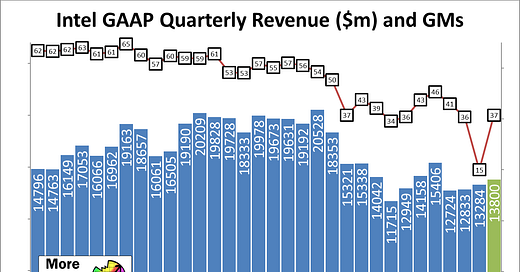As I’ve been covering more of these quarterly calls, I’m starting to recognize how and when companies are focusing on different parts of the numbers and metrics. Intel’s recent Q3 numbers are doing just that - due to non-cash based restructuring and impairment charges, headline numbers like Gross Margins don’t make a lot of sense until you peel away…
Substack is the home for great culture



